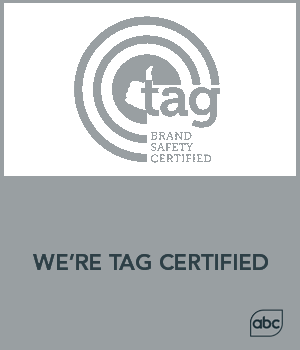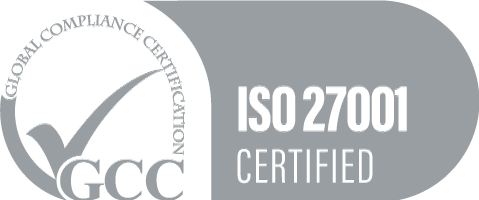Table of Content
Contextual targeting is gaining increasing traction these days as marketers search for alternative marketing methods in response to the phasing out of third-party online cookies. The demise of third-party cookies does not mean we can no longer have effective targeting. In fact, marketers are now focusing more on the more relevant, higher quality first-party data which has always been there at their front yard but often neglected in place of the more popular use of others’ data, known as third-party data.
Here, we want to explore how we can harness the power of contextual targeting by learning how it works, the myths, and offer useful tips to enhance your contextual targeting campaign.
How Contextual Targeting Works:
Contextual targeting revolves around digesting and “understanding” keywords and topics of the website or web page, to figure out its primary theme.
When you’re running PPC ads in Google, you can select the targeted keywords and topics, to limit your ad to be shown only on sites related to those keywords or topics. This is what makes contextual more appealing to viewers and less intrusive as compared to behavioral advertising.
Your selected keywords or topics dictate where you want your ads to appear. For example, if you are running ads, and your primary keyword is “dumbbells,” you might choose keywords such as “workout equipment” or “strong workout equipment.” Your ads will only appear on websites with those keywords which also helps in the audience segmentation process, thereby reaching high-intent viewers. There is also an option of selecting negative keywords so that your ad doesn’t appear when someone isn’t even searching for dumbbells. This could be “barbells.”
If you decide to run your ads based on topics instead of keywords, you can still run using “dumbbells”, but this time choose a broader term or category like “health and fitness”. In this case, your ad is less targeted and could end up with more results but less relevance.
Contextual targeting today has evolved and improved with recent advances in AI and Natural Language Processing (NLP) to become an even more sophisticated option for targeting today. For example, advertisers can target ads based on the content of videos instead of their site keywords or URL, which may not necessarily include every relevant content of the video, that could potentially reach your target audiences.
Benefits of Contextual Targeting:
There are many benefits to contextual targeting. The idea of contextual targeting is that your audience gets ads that are relevant to the content that they are browsing. This is less intrusive on the audiences’ privacy as ads make fewer assumptions based on their demographics. In this way, contextual ads are less aversive as it does not need to rely on personal data.
Contextual ads are also lower in cost as compared to cookie-based advertising. Research with GumGum and Dentsu Aegis Network found that the cost of contextual ads was 36% less than third-party cookie-based ads per thousand impressions (eCPM), while cost-per-click (CPC) was 48% lower and cost per thousand viewable impressions (vCPM) were lower by 41%.
Check out other benefits of contextual targeting here!
Myths of contextual targeting:
#1 “Contextual data is inferior to third-party cookie data”
Contextual data is perceived as a less effective marketing tool when compared to cookies. However, the fact is, contextual signals play a big role in ID-based targeting. An individual’s web behavioral data contributes to a bulk of the look-alike targeting that is foundational to providing insights that cookies deliver. Furthermore, similar to cookie retargeting, contextual targeting allows for audience layering and recency.
When ID-based insights were more available to marketers in the past, we relied on previous search behaviors instead of finding consumers when they are actively researching products. Contextual targeting emphasizes the timeliness of an ad by reaching prospects at the point of research where they are consuming content about the product.
In other words, contextual targeting is not less effective than cookie targeting, they are counterparts that are useful for different marketing strategies. Contextual signals are foundational in scaling up a marketing strategy.
#2 “It isn’t as effective as cookie targeting”
Neuroanalytic research from GumGum and SPARK Neuro found that contextual targeting elicited 43% more neural engagement, 2.2 times better ad recall, and inspired a statistically significant increase in purchase intent as compared to ads that are irrelevant to their browsing context. There is also an increase in favorability and memorability towards brands showing contextually relevant ads. All in all, contextually targeted ads are more well-received and viewers are generally more receptive to them.
#3 “It’s only a keyword-based approach”
Traditional contextual advertising matches ads to sites on a key-word based approach. However, the integration of machine learning and developments of NLP in contextual targeting has added breadth to its technology to help understand nuances in context. Ads can now be matched in the context of images, audio and videos even if these contents are not expressed in text.
Tips for Contextual Targeting
Here are tips on how to go about the process of launching a successful keyword contextual targeting campaign.
1. Know Your Audience
In every campaign, it is crucial to identify your audience and their interests. This is especially important for an effective contextual campaign since you have the liberty to choose specific keywords. It would be beneficial to invest resources in understanding your audience and their interest beyond your product.
2. Generate Keywords
Each ad group should generally have between 5 to 50 keywords. It’s best to avoid repeating keywords that are in the same group. You can make good use of the keyword tool to generate a good keyword list. If your company is already established and has a strong brand, remember to include branded keywords in keyword targeted groups. Also, use keywords that are closely related to the ad group theme, this extends your reach in a clever way.
For example, if your business provides financial services, your target keywords can differ across your target audience in different life stages. Given that your target audiences are new families, your keywords may include ‘loan’, ‘mortgages’. But if you take time to further understand your target audience, they are likely to be in the search for a new car and you may find success in targeting keywords like ‘family car’. Therefore, it is advantageous to study your target audience beforehand.
3. Add Negative Keywords
These are basically keyword terms that may have a close spelling with your targeted keyword. This feature also protects your brand from being associated with inappropriate content. Setting negative keywords makes sure people don’t get your ad even when there are not searching for what you’re offering. In our previous example, the negative keyword was barbells when targeting dumbbells.
4. Utilize Dynamic Creative Optimization
Dynamic Creative Optimization (DCO) aims to deliver contextually relevant content and ads for webpages that are targeted. DCO ads typically outperform their static counterparts, this would improve the efficacy of your ad campaign.
5. Conversion Tracking
There is no point in running a campaign if you don’t know what you’re getting from it. Otherwise, you might just keep spending with no substantial results. It’s important to check your ad performance through various metrics to observe how your campaign is running.
6. Optimize Your Campaigns
After running your ad for a couple of days, review your campaign performance. Do not hesitate to pause the campaign to adjust your bidding and make the changes where necessary. Refine the poor matches by reviewing your keywords and negative keywords and excluding placements. Focus and add more groups that are similar to the ones performing well. You may also use tools like Google Ads Conversion Tracking that provide insightful information that supports your campaign review and evaluation.
Final thoughts on Keyword Contextual Targeting
Contextual targeting is a highly invaluable method to reach high-intent audiences. It does not discriminate against demographics, gender, income level, or any segmentation but simply places your ad in front of audiences who are browsing on the web for related content. This non-invasive targeting option coupled with machine learning becomes a powerful tool to reach your target audience and be received favorably without intruding on your audiences’ privacy.
At XPO, we have developed our proprietary Natural Language Processing (NLP)-based AI Engine called Lumina that aims to deliver the best possible contextual experience to your target audience. Our engine supports 17 languages, recommends keywords, and interprets context and content. Request a demo with us today to learn how we can provide you relevant, engaging, and successful advertising outcomes.






